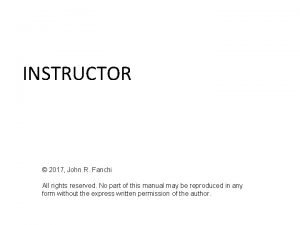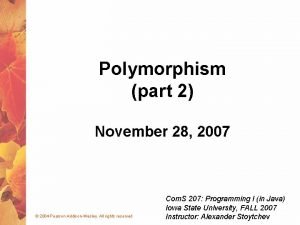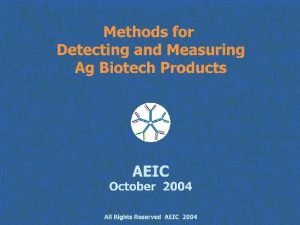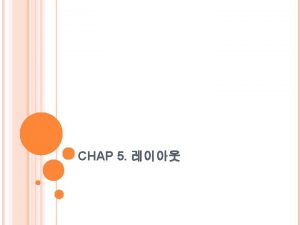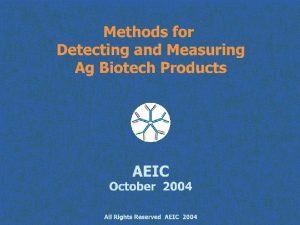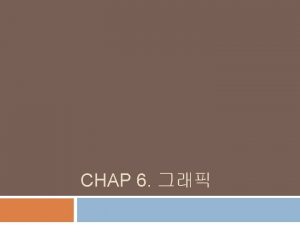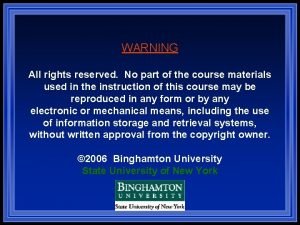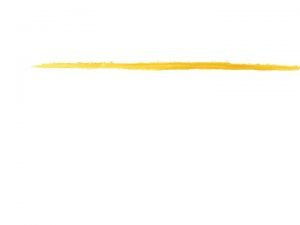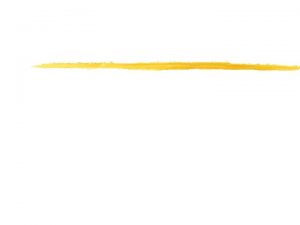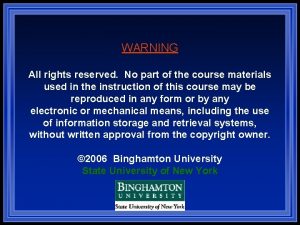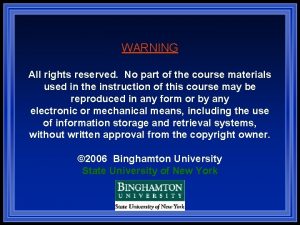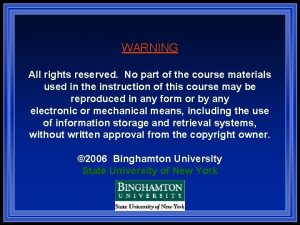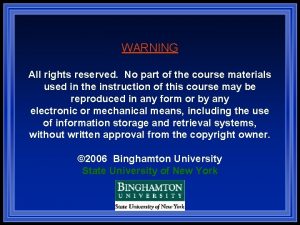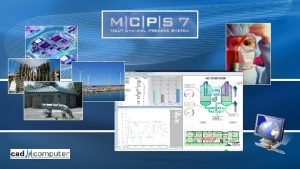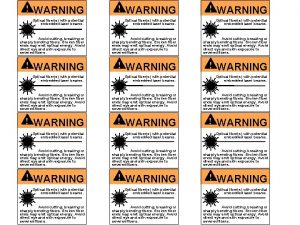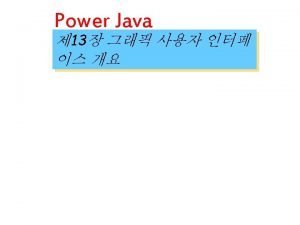WARNING All rights reserved No part of the

































- Slides: 33

WARNING All rights reserved. No part of the course materials used in the instruction of this course may be reproduced in any form or by any electronic or mechanical means, including the use of information storage and retrieval systems, without written approval from the copyright owner. © 2006 Binghamton University State University of New York

ISE 211 Engineering Economy Depreciation Chapter 11

Introduction q While considering the different analysis techniques, we have avoided income taxes, which are an important element of most economical analyses. q For capital equipment, depreciation is required to compute income taxes. q Depreciation is defined as a “decrease in value” – depreciation of assets is an important component of many after-tax economic analyses, since depreciation may be deducted from taxable income. q The cost of the asset, less the total depreciation charges made, is know as the book value – which can also be defined as the remaining unallocated cost of an asset.

Introduction (cont’d) q Types of Property: the rules for depreciation are linked to the classification of business property as either tangible or intangible. q Tangible property: can be seen, touched, and felt -- real property (land, buildings, etc) and personal property (equipment, vehicles, office machinery, etc). q Intangible property: all property that has value to the owned but cannot be directly seen or touched (patents, copyright, trademarks, etc) q Many of the properties that wear out, decay, or lose value can be depreciated as business assets. q Almost all tangible properties (exception: land) can be depreciated.

Depreciation Calculation Fundamentals § Book Value (BV) = Cost – Depreciation charges made to date General Depreciation

Depreciation Calculation Fundamentals BVt = Cost Basis - q Where BVt = Book Value of the depreciated asset at the end of time t q Cost Basis = B = the dollar amount that is being depreciated - - this includes the asset’s purchase price as well as any other costs necessary to make the asset ready for use. q = the sum of depreciation deduction taken from time 0 to time t, where di is the depreciation deduction in year i. q The above equation shows that year-to-year depreciation charges reduce an asset’s book value over its life.

Depreciation Calculation Methods q The six major depreciation methods that will be presented herein are: 1) Straight Line Depreciation (SL) 2) Sum-of-Years Digits Depreciation (SOYD) 3) Declining Balance Depreciation (DB) 4) Composite Declining Balance Depreciation (CDB) 5) Unit of Production Depreciation (UOP) 6) Modified Accelerated Cost Recovery System Depreciation (MACRS) q Depreciation methods generally result in the same total depreciation deductions, so it is the timing of the deductions that characterize the different methods.

Depreciation Calculation Methods (cont’d) q Immediate tax savings are more valuable than tax savings some years in the future due to the time value of money. q For this reason, a profitable firm prefers to depreciate its assets as rapidly as possible. q On the other hand, firms which are not profitable would have a little or no incentive to depreciate their assets rapidly.

1) Straight Line (SL) Depreciation q The most straightforward and best-known of the various depreciation methods is the straight line approach. q In this method, a constant depreciation charge is made based on the cost of the asset (B), the salvage value (S), and the useful life in years (N) as follows: Annual Depreciation Charge = dt = (B-S)/N q where (B-S) represent the total amount to be depreciated. q The depreciation charges (dj) for a specific year j, j=1, 2, …, n, may also be computed based on the book value at the end of the jth year as follows: q The book value at the end of the jth year is:

Example 1 A special type of equipment has a first cost of $900, a 5 year useful life, and a $70 salvage value. Compute the SL depreciation schedule.

Example 1 Solution (cont’d)

2) Sum-of-Years Digits (SOYD) Depreciation q The Sum-of-Years Digits method results in depreciation charges that are larger than those of straight line depreciation during the early years of the useful life of an asset, and necessarily, smaller during the later years. q The SOYD depreciation charge (dt) for year t is expressed as: Where : dt = depreciation charge in any year t N = number of years in depreciable life SOYD = sum-of-year digits, calculated as: B = cost of the asset made ready for use S = estimated salvage value after depreciable life

Example 1 A special type of equipment has a first cost of $900, a 5 -year useful life, and a $70 salvage value. Compute the SOYD depreciation schedule.

Example 1 Solution (cont’d)

3) Declining Balance (DB) Depreciation q DB depreciation charge is computed by applying a constant depreciation rate to the property’s declining book value. q The DB depreciation charge for year t can be found as follows: q Since the book value equals the cost minus depreciation charge to date, the above equation can be rewritten as follows: q The two rates specified in the Tax Reform Act of 1986 are 150% and 200% of the SL rate. q Hence r = 2 or 1. 5

3) Declining Balance (DB) Depreciation § Therefore, the Double Declining Balance (DDB) is obtained, when r = 2, as follows: § The Book Value, BVt, can be found by using the following general form: Example 1: A special type of equipment has a first cost of $900, a 5 year useful life, and a $70 salvage value. a) Determine the DDB BV at the end of the third year. b) Determine the total DDB depreciation charges at the end of the third year. c) Compute the DDB depreciation schedule. d) Compute the 150% DB depreciation schedule.

Example 1 Solution (cont’d)

4) Composite Declining Balance (CDB) Depreciation q Since a DB depreciation schedule is independent of the estimated salvage value, any of the three situations illustrated below might occur: q First: in Figure (a), the book value of the asset is seen to decline below the salvage value. q Since the depreciation charges are not permitted to reduce the book value below the salvage value, the schedule must be modified in accordance with the IRS regulations.

4) Composite Declining Balance (CDB) Depreciation q. Second: the schedule in Figure (b) presents no problem, since the DB depreciation schedule results in a book value which (coincidentally) corresponds exactly to the salvage value at the end of the asset’s useful life. q. Lastly: Figure (c ) illustrates the situation where the asset is not fully depreciated by the end of its useful life. This problem may be resolved in either of two approaches: 1) If the asset is retained in service beyond its estimated useful life, then DB depreciation will continue to be charged in subsequent years until either the current estimated salvage value is reached, or until the asset is disposed of. 2) The second alternative is to use a composite method. With this approach, a “switch” to another depreciation method (e. g. , SL) is made at some point during the life of the asset. The point (in time) of the switch is selected such that the book value of the asset is reduced to its salvage value as quickly as possible.

Example 1 Equipment (a special handling device for food and beverage manufacture) has a first cost of $14500, a 5 -year useful life, and a $1000 salvage value. Determine the Double Declining Balance depreciation schedule with conversion to SL at the most desirable time.

6) Unit of Production (UOP) Depreciation q In rare situations, the recovery of depreciation on a particular asset is more closely related to use than to time. q Example: if the natural resources will be exhausted before the machinery wears out. q In these instances, UOP depreciation may be employed and is defined as: q. UOP depreciation in any year = q This is not considered an acceptable method for general use in depreciating industrial equipment.

Example 1 A truck for hauling coal has an estimate net cost of $55, 000 and is expected to give service for 250, 000 miles, resulting in a zero salvage value. Compute the allowed depreciation amount for the truck usage of 30, 000 miles.

Example 2 A piece of equipment that costs $900 has been purchased for use in a san and gravel pit. The pit will operate for five years, while a nearby airport is being reconstructed and paved. Then the pit will be shut down, and the equipment removed and sold for $70. Compute the UOP depreciation schedule, if the airport reconstruction schedule calls for 40, 000 cubic meters of sand gravel as follows:

5) Modified Accelerated Cost Recovery System (MACRS) q The MACRS was created as part of the TAX Reform Act of 1986. q It is now the principal means for computing depreciation expenses. q Three major advantages of MACRS depreciation are: 1) The computations are made using “property class lives” that are less than the “actual useful lives” 2) Salvage values are assumed to be zero 3) Tables of the annual percentage simplify computations

5) Modified Accelerated Cost Recovery System (MACRS) Steps in MACRS depreciation: 1) Determine the property type and class (within a type) of the asset being depreciated. § There are two types of property: personal and real (estate) property. All personal property falls into one of the six classes displayed in Table 10 -2 (page 378) § Real estate, on the other hand, is categorized as either residential rental or nonresidential property. 2) After the property class is determined, determine depreciation charges from the schedules listed in Tables 10 -4* and 10 -5*. , for personal or real property, respectively.




Example 4 On July 1 st, Nancy Silva (Silvia’s mother) paid $600, 000 for a commercial building and an additional $150, 000 for the land on which it stands. Four years later, she sold the property for $850, 000. Compute the MACRS depreciation for each of the five calendar years during which she had the property.

Spreadsheets and Depreciation Technique Excel Function Straight Line SLN(cost, salvage, life) Declining Balance DDB(cost, salvage, life, period, factor) Sum of Years’ Digits SYD(cost, salvage, life, period) MACRS VDB(cost, salvage, life, start-period, endperiod, factor, no-switch)

Spreadsheets and Depreciation (Use of VDB) 1 - Salvage = 0, since MACRS assumes no salvage value. 2 - Life = recovery period of 3, 5, 7, 10, 15, or 20 years. 3 - 1 st period runs from 0 to 0. 5, 2 nd period from 0. 5 to 1. 5, tth period from t-0. 5 to t 0. 5, and last period from life-0. 5 to life. 4 - factor = 2 for recover periods of 3, 5, 7, or 10 years and =1. 5 for recovery periods of 15 or 20 years. 5 - Since MACRS includes a switch to straight line, no-switch can be omitted.

Example I Consider a 7 -year MACRS property asset, which has $150, 000 of office equipment. Use VDB to compute the depreciation amounts.

Homework # 11 (Chapter # 11) 1 4(a, b) 5(c, d) 8 9 12 17 23 25 27 29 30 31 32 34 Use Spreadsheet Software:
 Warning all rights reserved
Warning all rights reserved Warning all rights reserved
Warning all rights reserved All rights reserved example
All rights reserved example Copyright 2015 all rights reserved
Copyright 2015 all rights reserved All rights reserved sentence
All rights reserved sentence Creative commons vs all rights reserved
Creative commons vs all rights reserved Confidential all rights reserved
Confidential all rights reserved Sentinel value
Sentinel value Copyright 2015 all rights reserved
Copyright 2015 all rights reserved Pearson education inc all rights reserved
Pearson education inc all rights reserved Microsoft corporation. all rights reserved.
Microsoft corporation. all rights reserved. Microsoft corporation. all rights reserved.
Microsoft corporation. all rights reserved. Microsoft corporation. all rights reserved.
Microsoft corporation. all rights reserved. Pearson education inc. all rights reserved
Pearson education inc. all rights reserved Dell all rights reserved copyright 2009
Dell all rights reserved copyright 2009 Siprop
Siprop Quadratic equation cengage
Quadratic equation cengage Confidential all rights reserved
Confidential all rights reserved Microsoft corporation. all rights reserved
Microsoft corporation. all rights reserved Pearson education inc. all rights reserved
Pearson education inc. all rights reserved Copyright © 2018 all rights reserved
Copyright © 2018 all rights reserved 2017 all rights reserved
2017 all rights reserved Copyright 2010 pearson education inc
Copyright 2010 pearson education inc 2010 pearson education inc
2010 pearson education inc Confidential all rights reserved
Confidential all rights reserved Confidential all rights reserved
Confidential all rights reserved R rights reserved
R rights reserved Rights reserved
Rights reserved Positive rights vs negative rights
Positive rights vs negative rights Riparian or littoral rights
Riparian or littoral rights Duty towards self
Duty towards self Legal rights vs moral rights
Legal rights vs moral rights Negative rights vs positive rights
Negative rights vs positive rights Negative rights vs positive rights
Negative rights vs positive rights


























